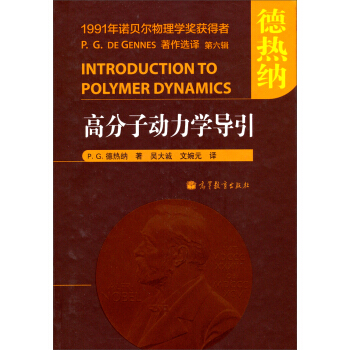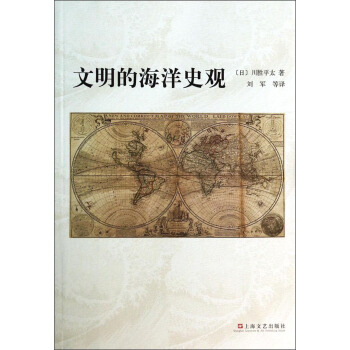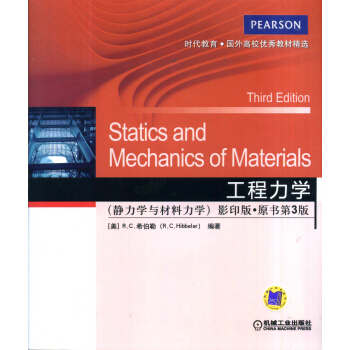

具体描述
內容簡介
《生物數學·第1捲(第3版)》是近代生物數學方麵的名著。這是第一捲,第三版,在原來版本的基礎上做瞭全麵修訂。近年來這個科目的茁壯成長和新知識點的不斷湧現,新的版本將原來的一捲集分成上下兩捲,擴大瞭知識容量,第二捲絕大多數是新增知識點。書中對生物學中的反應擴散方程和形態發生學的數學理論及研究成果作瞭全麵介紹,是學習與研究生物數學的一部不可多得的參考書。目錄
contents, volume ipreface to the third edition
preface to the first edition
1. continuous population models for single species
1.1 continuous growth models
1.2 insect outbreak model: spruce budworm
1.3 delay models
1.4 linear analysis of delay population models: periodic solutions
1.5 delay models in physiology: periodic dynamic diseases
1.6 harvesting a single natural population
1.7 population model with age distribution
exercises
2. discrete population models for a single species
2.1 introduction: simple models
2.2 cobwebbing: a graphical procedure of solution
2.3 discrete logistic-type model: chaos
2.4 stability, periodic solutions and bifurcations
2.5 discrete delay models
2.6 fishery management model
.2.7 ecological implications and caveats
2.8 tumour cell growth
exercises
3. models for interacting populations
3.1 predator-prey models: lotka-volterra systems
3.2 complexity and stability
3.3 realistic predator-prey models
3.4 analysis of a predator-prey model with limit cycle periodic behaviour: parameter domains of stability
3.5 competition models: competitive exclusion principle
3.6 mutualism or symbiosis
3.7 general models and cautionary remarks
3.8 threshold phenomena
3.9 discrete growth models for interacting populations
3.10 predator-prey models: detailed analysis
exercises
4. temperature-dependent sex determination (tsd)
4.1 biological introduction and historical asides on the crocodilia.
4.2 nesting assumptions and simple population model
4.3 age-structured population model for crocodilia
4.4 density-dependent age-structured model equations
4.5 stability of the female population in wet marsh region l
4.6 sex ratio and survivorship
4.7 temperature-dependent sex determination (tsd) versus genetic sex determination (gsd)
4.8 related aspects on sex determination
exercise
5. modelling the dynamics of marital interaction: divorce prediction and marriage repair
5.1 psychological background and data: gottman and levenson methodology
5.2 marital typology and modelling motivation
5.3 modelling strategy and the model equations
5.4 steady states and stability
5.5 practical results from the model
5.6 benefits, implications and marriage repair scenarios
6. reaction kinetics
6.1 enzyme kinetics: basic enzyme reaction
6.2 transient time estimates and nondimensionalisation
6.3 michaelis-menten quasi-steady state analysis
6.4 suicide substrate kinetics
6.5 cooperative phenomena
6.6 autocatalysis, activation and inhibition
6.7 multiple steady states, mushrooms and isolas
exercises
7. biological oscillators and switches
7.1 motivation, brief history and background
7.2 feedback control mechanisms
7.3 oscillators and switches with two or more species: general qualitative results
7.4 simple two-species oscillators: parameter domain determination for oscillations
7.5 hodgkin-huxley theory of nerve membranes:fitzhugh-nagumo model
7.6 modelling the control of testosterone secretion and chemical castration
exercises
8. bz oscillating reactions
8.1 belousov reaction and the field-koros-noyes (fkn) model
8.2 linear stability analysis of the fkn model and existence of limit cycle solutions
8.3 nonlocal stability of the fkn model
8.4 relaxation oscillators: approximation for the belousov-zhabotinskii reaction
8.5 analysis of a relaxation model for limit cycle oscillations in the belousov-zhabotinskii reaction
exercises
9. perturbed and coupled oscillators and black holes
9.1 phase resetting in oscillators
9.2 phase resetting curves
9.3 black holes
9.4 black holes in real biological oscillators
9.5 coupled oscillators: motivation and model system
9.6 phase locking of oscillations: synchronisation in fireflies
9.7 singular perturbation analysis: preliminary transformation
9.8 singular perturbation analysis: transformed system
9.9 singular perturbation analysis: two-time expansion
9.10 analysis of the phase shift equation and application to coupled belousov-zhabotinskii reactions
exercises
10. dynamics of infectious diseases
10.1 historical aside on epidemics
10.2 simple epidemic models and practical applications
10.3 modelling venereal diseases
10.4 multi-group model for gonorrhea and its control
10.5 aids: modelling the transmission dynamics of the human immunodeficiency virus (hiv)
10.6 hiv: modelling combination drug therapy
10.7 delay model for hiv infection with drug therapy
10.8 modelling the population dynamics of acquired immunity to parasite infection
10.9 age-dependent epidemic model and threshold criterion
10.10 simple drug use epidemic model and threshold analysis
10.11 bovine tuberculosis infection in badgers and caule
10.12 modelling control strategies for bovine tuberculosis in badgers and cattle
exercises
11. reaction diffusion, chemotaxis, and noniocal mechanisms
11.1 simple random walk and derivation of the diffusion equation
11.2 reaction diffusion equations
11.3 models for animal dispersal
11.4 chemotaxis
11.5 nonlocal effects and long range diffusion
11.6 cell potential and energy approach to diffusion and long range effects
exercises
12. oscillator-generated wave phenomena
12. i belousov-zhabotinskii reaction kinematic waves
12.2 central pattern generator: experimental facts in the swimming of fish
12.3 mathematical model for the central pattern generator
12.4 analysis of the phase coupled model system
exercises
13. biological waves: single-species models
13. l background and the travelling waveform
13.2 fisher-kolmogoroff equation and propagating wave solutions
13.3 asymptotic solution and stability of wavefront solutions of the fisher-kolmogoroff equation
13.4 density-dependent diffusion-reaction diffusion models and some exact solutions
13.5 waves in models with multi-steady state kinetics: spread and control of an insect population
13.6 calcium waves on amphibian eggs: activation waves on medaka eggs
13.7 invasion wavespeeds with dispersive variability
13.8 species invasion and range expansion
exercises
14. use and abuse of fractals
14.1 fractals: basic concepts and biological relevance
14.2 examples of fractals and their generation
14.3 fractal dimension: concepts and methods of calculation
14.4 fractals or space-filling?
appendices
a. phase plane analysis
b. routh-hurwitz conditions, jury conditions, descartes'
rule of signs, and exact solutions of a cubic
b.1 polynomials and conditions
b.2 descartes' rule of signs
b.3 roots of a general cubic polynomial
bibliography
index
contents, volume ii
j.d. murray: mathematical biology, ii: spatial models and biomedical applications
preface to the third edition
preface to the first edition
1. multi-species waves and practical applications
1.1 intuitive expectations
1.2 waves of pursuit and evasion in predator-prey systems
1.3 competition model for the spatial spread of the grey squirrel in britain
1.4 spread of genetically engineered organisms
1.5 travelling fronts in the belousov-zhabotinskii reaction
1.6 waves in excitable media
1.7 travelling wave trains in reaction diffusion systems with oscillatory kinetics
1.8 spiral waves
1.9 spiral wave solutions of x-co reaction diffusion systems
2. spatial pattern formation with reaction diffusion systems
2.1 role of pattern in biology
2.2 reaction diffusion (turing) mechanisms
2.3 general conditions for diffusion-driven instability:linear stability analysis and evolution of spatial pattern
2.4 detailed analysis of pattern initiation in a reaction diffusion mechanism
2.5 dispersion relation, turing space, scale and geometry effects in pattern formation models
2.6 mode selection and the dispersion relation
2.7 pattern generation with single-species models: spatial heterogeneity with the spruce budworm model
2.8 spatial patterns in scalar population interaction diffusion equations with convection: ecological control strategies
2.9 nonexistence of spatial patterns in reaction diffusion systems: general and particular results
3. animal coat patterns and other practical applications of reactiondiffusion mechanisms
3.1 mammalian coat patterns--'how the leopard got its spots'
3.2 teratologies: examples of animal coat pattern abnormalities
3.3 a pattern formation mechanism for butterfly wing patterns
3.4 modelling hair patterns in a whorl in acetabularia
4. pattern formation on growing domains: alligators and snakes
4. i stripe pattern formation in the alligator: experiments
4.2 modelling concepts: determining the time of stripe formation
4.3 stripes and shadow stripes on the alligator
4.4 spatial patterning of teeth primordia in the alligator:background and relevance
4.5 biology of tooth initiation
4.6 modelling tooth primordium initiation: background
4.7 model mechanism for alligator teeth patterning
4.8 results and comparison with experimental data
4.9 prediction experiments
4.10 concluding remarks on alligator tooth spatial patterning
4.11 pigmentation pattern formation on snakes
4.12 cell-chemotaxis model mechanism
4.13 simple and complex snake pattern elements
4.14 propagating pattern generation with the celi-chemotaxis system
5. bacterial patterns and chemotaxis
5.1 background and experimental results
5.2 model mechanism for e. coli in the semi-solid experiments
5.3 liquid phase model: intuitive analysis of pattern formation
5.4 interpretation of the analytical results and numerical solutions
5.5 semi-solid phase model mechanism for s. typhimurium
5.6 linear analysis of the basic semi-solid model
5.7 brief outline and results of the nonlinear analysis
5.8 simulation results, parameter spaces, basic patterns
5.9 numerical results with initial conditions from the experiments
5.10 swarm ring patterns with the semi-solid phase model mechanism
5.11 branching patterns in bacillus subtilis
6. mechanical theory for generating pattern and form in development
6.1 introduction, motivation and background biology
6.2 mechanical model for mesenchymal morphogenesis
6.3 linear analysis, dispersion relation and pattern formation potential
6.4 simple mechanical models which generate spatial patterns with complex dispersion relations
6.5 periodic patterns of feather germs
6.6 cartilage condensation in limb morphogenesis and morphogenetic rules
6.7 embryonic fingerprint formation
6.8 mechanochemical model for the epidermis
6.9 formation of microvilli
6.10 complex pattern formation and tissue interaction models
7. evolution, morphogenetic laws, developmental constraints and teratologies
7.1 evolution and morphogenesis
7.2 evolution and morphogenetic rules in cartilage formation in the vertebrate limb
7.3 teratologies (monsters)
7.4 developmental constraints, morphogenetic rules and the consequences for evolution
8.a mechanical theory of vascular network formation
8.1 biological background and motivation
8.2 cell-extracellular matrix interactions for vasculogenesis
8.3 parameter values
8.4 analysis of the model equations
8.5 network patterns: numerical simulations and conclusions
9. epidermal wound healing
9.1 brief history of wound healing
9.2 biological background: epidermal wounds
9.3 model for epidermal wound healing
9.4 nondimensional form, linear stability and parameter values
9.5 numerical solution for the epidermal wound repair model
9.6 travelling wave solutions for the epidermal model
9.7 clinical implications of the epidermal wound model
9.8 mechanisms of epidermal repair in embryos
9.9 actin alignment in embryonic wounds: a mechanical model
9.10 mechanical model with stress alignment of the actin filaments in two dimensions
10. dermal wound healing
10.1 background and motivation---general and biological
10.2 logic of wound healing and initial models
10.3 brief review of subsequent developments
10.4 model for fibroblast-driven wound healing: residual strain and tissue remodelling
10.5 solutions of the model equation solutions and comparison with experiment
10.6 wound healing model of cook (1995)
10.7 matrix secretion and degradation
10.8 cell movement in an oriented environment
10.9 model system for dermal wound healing with tissue structure
10.10 one-dimensional model for the structure of pathological scars
10.11 open problems in wound healing
10.12 concluding remarks on wound healing
11. growth and control of brain tumours
11.1 medical background
11.2 basic mathematical model of glioma growth and invasion
11.3 tumour spread in vitro: parameter estimation
11.4 tumour invasion in the rat brain
11.5 tumour invasion in the human brain
11.6 modelling treatment scenarios: general comments
11.7 modelling tumour resection (removal) in homogeneous tissue
11.8 analytical solution for tumour recurrence after resection
11.9 modelling surgical resection with brain tissue heterogeneity
11.10 modelling the effect of chemotherapy on tumour growth
11.11 modeling tumour polyclonality and cell mutation
12. neural models of pattern formation
12.1 spatial patterning in neural firing with a simple activation-inhibition model
12.2 a mcchanism for stripe formation in the visual cortex
12.3 a model for the brain mechanism underlying visual hallucination patterns
12.4 neural activity model for shell patterns
12.5 shamanism and rock art
13. geographic spread and control of epidemics
13.1 simple model for the spatial spread of an epidemic
13.2 spread of the black death in europe 1347-1350
13.3 brief history of rabies: facts and myths
13.4 the spatial spread of rabies among foxes i: background and simple model
13.5 spatial spread of rabies among foxes ii:three-species (sir) model
13.6 control strategy based on wave propagation into a non-epidemic region: estimate of width of a rabies barrier
13.7 analytic approximation for the width of the rabies control break
13.8 two-dimensional epizootic fronts and effects ot variable fox densitics: quantitative predictions for a rabies outbreak in england
13.9 effect of fox immunity on spatial spread of rabies
14. wolf territoriality, wolf-deer interaction and survival
14.1 introduction and wolf ecology
14.2 models for wolf pack territory formation: single pack--home range model
14.3 multi-wolf pack territorial model
14.4 wolf-deer predator-prey model
14.5 concluding remarks on-wolf territoriality and deer survival
14.6 coyote home range patterns
14.7 chippewa and sioux intertribal conflict c1750-1850
appendix
a. general results for the laplacian operator in bounded domains
bibliography
index
前言/序言
用户评价
這本書的裝幀非常精美,封麵設計簡潔大氣,采用瞭深邃的藍色作為主色調,搭配燙金的“生物數學·第1捲”字樣,散發齣一種嚴謹而富有學術氣息的質感。翻開書頁,紙張的觸感細膩而富有彈性,印刷清晰,字體大小適中,即使長時間閱讀也不會感到疲勞。在內容呈現上,作者似乎非常注重知識體係的構建,從目錄的設計就能看齣其條理性和係統性。雖然我還沒有深入閱讀,但單從其編排結構來看,它似乎能為讀者提供一個紮實的生物數學入門框架。我尤其期待書中對數學工具在生物學問題中應用的部分,例如模型構建、數據分析等方麵,相信它能為我理解復雜的生物現象提供新的視角和強大的解析工具。這是一種能夠激發人探索欲望的學術著作,迫不及待想進入書中的世界,去解鎖那些隱藏在數字背後的生命奧秘。
评分作為一個長期關注生物科學前沿動態的業餘愛好者,我一直希望能找到一本能夠係統梳理和解釋數學在生物領域扮演角色的書籍。這本書的名字《生物數學·第1捲》無疑正中下懷,而且是第三版,這通常意味著內容經過瞭多次打磨和更新,更加成熟和完善。我設想這本書會涵蓋從基礎的微分方程、概率論,到更復雜的動力學模型、統計推斷等內容,並且會用生動的生物學案例來佐證這些數學理論的實際應用。想象一下,通過數學的語言來理解種群的動態演變,或者預測疾病的傳播趨勢,這本身就是一件令人興奮的事情。我非常期待書中是否會涉及一些近年來新興的生物數學分支,例如計算生物學、係統生物學等,它們正在深刻地改變我們對生命的認知方式。
评分這本書的名字本身就充滿瞭科學的魅力,它將兩個看似截然不同的學科——生物學和數學——巧妙地結閤在一起。我一直認為,數學是理解自然界深層規律的鑰匙,而生物學則是自然界中最復雜、最迷人的領域之一。這本書的齣版,無疑為我們提供瞭一個絕佳的窗口,去探索生命現象背後隱藏的數學邏輯。我設想它會帶領讀者從細胞的微觀世界,到生態係統的宏觀格局,用數學的語言揭示生命的奧秘。我尤其希望能從書中學習到如何構建有效的數學模型來描述生物過程,並理解這些模型在預測和控製生物係統中的作用,這對於解決當前麵臨的許多生物學挑戰,如疾病防治、環境保護等,都具有重要的意義。
评分這本《生物數學·第1捲》(第三版)的封麵設計非常具有吸引力,我個人非常喜歡這種低調而又富有內涵的風格,它不像一些科普讀物那樣花哨,而是透露齣一種紮實的學術底蘊。我對書中可能涉及的數學方法在解決生物學難題中的具體應用非常感興趣。例如,如何利用數學模型來模擬基因調控網絡,或者預測蛋白質摺疊過程。我知道,生物學研究越來越依賴於定量分析和計算能力,而一本好的生物數學教材,應該能夠為讀者提供必要的工具和思維方式。我希望這本書不僅能教會我數學公式,更能教會我如何“用數學的眼睛”去看待生物學問題,從而提齣更具創新性的研究思路。
评分這本書給我的第一印象是其厚重感,從書脊和頁數來看,它無疑是一部內容翔實的著作。作為一名正在學習生物學相關專業的學生,我對生物數學的理解還停留在比較基礎的層麵,很多時候會因為數學工具的欠缺而感到學習上的瓶頸。這本書恰好填補瞭我在這方麵的需求。我特彆期待它能清晰地講解一些生物學中常用的數學模型,例如Lotka-Volterra模型在捕食者-獵物關係中的應用,或者ODE和PDE在描述生物過程中的作用。同時,我也希望書中能夠提供一些實際操作的指導,比如如何利用編程語言(如Python或R)來實現這些模型,從而進行仿真和數據分析。
评分很有意思的
评分是很好,内容很全,适合生物数学方向的研究生、博士生、教研员等收藏拜读。系统论和控制论是以系统和控制的观点,进行综合分析的数学方法。系统论和控制论的方法没有把那些次要的因素忽略,也没有孤立地看待每一个特性,而是通过状态方程把错综复杂的关系都结合在一起,在综合的水平上进行全面分析。对系统的综合分析也可以就系统的可控性、可观测性和稳定性作出判断,更进一步揭示该系统生命活动的特征。
评分好
评分还没看,先给个好评吧。物流也快。好评。
评分书是经典,印刷质量不错,。
评分生物数学的好书,鼓励购买影印书籍。
评分60年代末,法国数学家托姆从拓扑学提出一种几何模型,能够描绘多维不连续现象,他的理论称为突变理论。
评分是很好,内容很全,适合生物数学方向的研究生、博士生、教研员等收藏拜读。系统论和控制论是以系统和控制的观点,进行综合分析的数学方法。系统论和控制论的方法没有把那些次要的因素忽略,也没有孤立地看待每一个特性,而是通过状态方程把错综复杂的关系都结合在一起,在综合的水平上进行全面分析。对系统的综合分析也可以就系统的可控性、可观测性和稳定性作出判断,更进一步揭示该系统生命活动的特征。
评分不错的书。。。。。。
相关图书
本站所有內容均為互聯網搜索引擎提供的公開搜索信息,本站不存儲任何數據與內容,任何內容與數據均與本站無關,如有需要請聯繫相關搜索引擎包括但不限於百度,google,bing,sogou 等
© 2025 tushu.tinynews.org All Rights Reserved. 求知書站 版权所有




![有机化学(第4版)(下册)/高等学校教材 [Orgnic Chemistry] pdf epub mobi 电子书 下载](https://pic.tinynews.org/11318855/564150deNb2e3db3f.jpg)









![EHS管理系列:环境安全管理体系理论与实践 [Environmental Safety Management System: Theory and Practice] pdf epub mobi 电子书 下载](https://pic.tinynews.org/11462772/53868266Nf8a275d4.jpg)

![离散时间控制系统(第二版) [Discrete-Time Control Systems, Second Edition?] pdf epub mobi 电子书 下载](https://pic.tinynews.org/11489732/53b141caNb8876a85.jpg)



